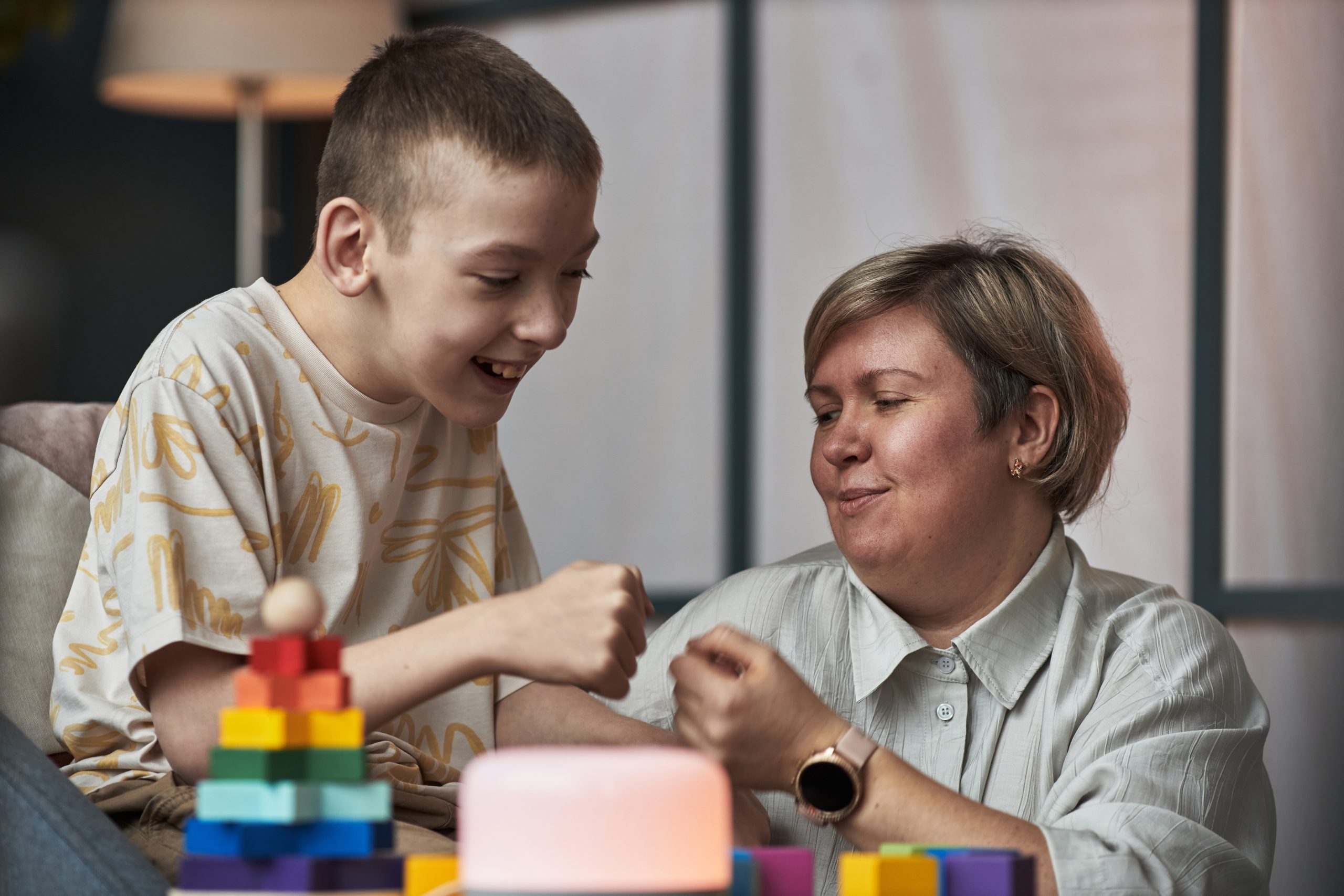Can a traumatic birth cause autism? Research suggests a complex relationship between birth trauma and…

Do Autistic People Know They Are Autistic?
The question of whether autistic people know they are autistic is far more nuanced than a simple yes or no answer. Just as autism spectrum disorder exists on a broad spectrum, so does autistic self-awareness. The autistic spectrum encompasses a wide range of behaviours and experiences, challenging the misconception that autism is a single condition with fixed symptoms. Understanding this complexity is crucial for families, health professionals, and autistic individuals themselves, as it leads to a better understanding while they navigate the journey of autism awareness and self discovery.

The relationship between autism and self awareness is deeply personal and varies dramatically from one autistic person to another. While some autistic individuals have clear understanding of their autistic traits from an early age, others may spend decades feeling different without connecting their experiences to autism. This variation reflects not just the diverse ways autism presents, but also the complex interplay of factors that influence how people recognize and understand their own neurodevelopmental differences; multiple factors contribute to the development of self-awareness in individuals on the autistic spectrum.
Introduction to Autism Spectrum Disorder
Autism Spectrum Disorder (ASD) is a lifelong neurodevelopmental condition that shapes how people see and interact with the world around them. We call it a “spectrum” because it covers such a wide range of autistic traits and experiences, which means every autistic person’s experience is different. The main features of autism spectrum disorder include differences in how people communicate socially, restricted and repetitive behaviours, and particular sensory sensitivities. You’ll see these characteristics in both autistic children and autistic adults, and they often affect how they go through daily life, relationships, and different environments.
The autism spectrum is really broad, so autistic people have all sorts of different strengths, challenges, and support needs. Some might find social communication quite tricky, whilst others could have intense sensory sensitivities or get deeply interested in specific topics. Repetitive behaviours, like following routines or doing particular movements, are pretty common too and can actually provide comfort or help people cope when things feel overwhelming.
Knowing about these differences and going for acceptance is crucial if we want to build supportive spaces. When families, teachers, and communities recognise the unique ways autistic people see things and what they need, they can offer the right kind of support that helps people flourish. By promoting acceptance and what autism spectrum disorder actually is, we help make sure that autistic people of all ages can live fulfilling lives and take part fully in society.
The Direct Answer
Many autistic people are fully aware they are autistic, especially those diagnosed in childhood or who actively sought an autism diagnosis themselves. However, the question of whether people know they’re autistic is nuanced—self-awareness can vary widely, and not everyone immediately recognizes their autistic identity. The reality encompasses a much broader range of experiences that defies simple categorization.
Research demonstrates that autistic adults often develop sophisticated self awareness through deliberate strategies. Studies show that autistic individuals actively engage in “knowing and accepting oneself” through learning from previous experiences, securing support from others, and understanding their autistic functionality across different contexts. This process reveals that not every autistic person follows the same path to self-recognition.
Some autistic individuals feel consistently “different” throughout their lives but may not connect these feelings to autism spectrum disorder until much later. They might struggle with social interactions, experience sensory sensitivities, or have intense interests without recognizing these as autistic characteristics. This disconnect often occurs due to limited autism awareness in their environment or outdated stereotypes about how autism presents.
A significant number of autistic adults remain undiagnosed and unaware of their autism, particularly autistic women and those who effectively mask their autistic traits. Adult diagnosis can be a complex process, with unique challenges such as overcoming stereotypes, finding knowledgeable professionals, and understanding the benefits of receiving a diagnosis later in life. Current estimates suggest that many autistic adults, especially women, receive their first autism diagnosis well into adulthood, sometimes in their 40s, 50s, or beyond.
Self awareness exists on a spectrum, just like autism itself, varying greatly among autistic individuals based on their unique circumstances, support systems, and access to accurate autism information.
The Spectrum of Self-Recognition
The journey to autism self-recognition follows remarkably diverse paths. Some autistic people actively research their own behaviours and traits, leading them to pursue formal diagnosis through health professionals. Through personal reflection, these individuals use introspection to recognize autistic traits, which helps them better understand their challenges and strengths. These individuals often demonstrate strong self awareness and advocacy skills, seeking appropriate support and accommodations based on their understanding of their own needs.
Others live their entire lives knowing they’re “different” but never connecting their experiences to autism spectrum disorder. They may develop elaborate coping mechanisms or assume their struggles are simply personality quirks or character flaws. This group often includes individuals who grew up when autism awareness was limited or who don’t match common stereotypes about autistic characteristics.
Many autistic adults fall somewhere in between these extremes – suspecting they might be autistic but remaining uncertain, or feeling confident in their self awareness while choosing not to pursue formal diagnosis. These individuals might engage with autism communities online, recognize themselves in autism content, or notice similarities with diagnosed family members without taking formal steps toward professional assessment.
The age of first awareness ranges dramatically, from early childhood recognition in some autistic children to senior citizens discovering their autism in their 70s or 80s. This wide range reflects both changing societal awareness of autism and the varied ways autism manifests across different individuals and life stages.
Understanding Autism Self-Awareness
Autism spectrum disorder is a neurodevelopmental disorder characterized by differences in social communication, sensory processing, and behavioural patterns including repetitive behaviours and intense interests. These core features affect daily life in countless ways, from how autistic individuals process sensory information to how they navigate social situations and express their emotional responses. Social interaction is a significant aspect of autism, as differences in social interaction can impact communication, relationships, and daily functioning. In addition, challenges in verbal communication are common, with some autistic individuals experiencing difficulties in verbal expression that can further affect their ability to connect with others.
The relationship between autism and self-perception is complex because autism itself affects how individuals understand and interpret their own internal mental states. Research indicates that while autistic people possess intact self-recognition abilities, they may face unique challenges in integrating self-referential information across different contexts. Difficulties with cognitive empathy, such as interpreting social cues, idiomatic language, and understanding others’ perspectives, can contribute to misunderstandings in social situations. However, it is important to note that many autistic individuals have strong emotional empathy, meaning they genuinely feel and share others’ emotions, even if this empathy is expressed differently from neurotypical individuals. This means an autistic person might clearly recognize their own reflection or understand their preferences, but struggle to compare their social skills accurately with neurotypical peers.
Autism affects self awareness in several key ways. Many autistic individuals have difficulty understanding their own inner mental states compared to others, which can lead to either overestimating others’ social competence while underestimating their own, or conversely, not recognizing the extent of their differences. Additionally, the intense focus and attention to detail common in autism can sometimes make it challenging to step back and see broader patterns in one’s own behaviour. When it comes to understanding social skills, autistic individuals may have particular difficulty interpreting nonverbal cues such as facial expressions and understanding body language, which can further complicate social communication and self-assessment.
The development of autism-specific self awareness often requires external support and deliberate reflection. Unlike some aspects of typical development that occur naturally, many autistic adults report that understanding their autism required conscious effort, research, and often guidance from others who recognized their autistic traits before they did.
The Spectrum of Self-Recognition
Self-recognition among autistic people demonstrates remarkable diversity in both timing and process. Some autistic individuals show early self awareness, often those with more obvious autistic characteristics or those growing up in families with existing autism awareness. These individuals might notice their sensory differences, social challenges, or intense interests and begin questioning whether these experiences align with autism spectrum disorder.
Professional diagnosis in childhood typically leads to clearer self awareness by adolescence, though the quality and depth of this understanding varies significantly. Some autistic children develop sophisticated understanding of their own autistic traits and how autism affects their daily experiences, while others may know they have an autism diagnosis without fully grasping what this means for their identity or functioning.
At the other end of the spectrum are individuals who spend decades unaware of their autism despite experiencing significant challenges. These often include autistic women whose presentations differ from traditional male-cantered autism criteria, highly intelligent autistic individuals who compensate effectively for their challenges, or those from families or communities where neurodiversity isn’t well understood or discussed.
The middle ground encompasses many autistic adults who experience gradual dawning awareness. They might initially dismiss their autistic traits as personality quirks, assume everyone shares their sensory experiences, or attribute their social difficulties to shyness or anxiety. This group often experiences a slow accumulation of evidence over time – perhaps through exposure to accurate autism information, relationships with other autistic people, or major life transitions that highlight their differences.
Factors That Influence Autistic Self-Awareness
Several key factors significantly impact whether and when autistic people recognize their own autism. Understanding these influences helps explain why experiences vary so dramatically across the autism community and provides insight into how to better support autism awareness and acceptance. Autism is a lifelong condition, meaning it is a persistent neurodevelopmental disorder that remains with individuals throughout their lives.
Age of diagnosis represents one of the most significant predictors of self awareness. Autistic children diagnosed early typically develop clear awareness of their autism by adolescence, though their understanding continues to evolve throughout their development. Early diagnosis at a young age allows for early intervention, such as speech and occupational therapy, which can support essential skill development and improve long-term outcomes. Early diagnosis provides a framework for understanding differences and accessing appropriate support, creating conditions that foster healthy autistic identity development.
Access to autism information and education within family, school, or community settings plays a crucial role in self-recognition. Families that openly discuss neurodiversity, schools that provide autism awareness education, and communities with strong autism acceptance create environments where autistic individuals can more easily recognize and understand their own traits.
The severity and visibility of autistic traits influence recognition timing, though not always in expected ways. While more obvious characteristics might seem likely to lead to earlier recognition, some autistic people with significant support needs may rely on others to help them understand their autism. Conversely, those with subtler presentations might take longer to recognize their autism but may develop deeper personal insight once they do.
Family attitudes toward mental health and neurodiversity significantly impact self-recognition possibilities. Families that stigmatize differences, dismiss mental health concerns, or lack awareness about autism create barriers to self-discovery. In contrast, families that celebrate neurodiversity and maintain open communication about differences provide supportive environments for autism self-recognition.

The Role of Masking and Camouflaging
Masking refers to the conscious or unconscious hiding of autistic traits to fit in socially and appear more neurotypical. Many individuals, especially women and older adults, may hide signs of autism to avoid standing out or being diagnosed. This phenomenon significantly impacts autistic self awareness because effective masking can prevent both the individual and others around them from recognizing their autism.
Autistic masking behaviours include suppressing stimming, forcing eye contact, copying others’ social behaviours, hiding sensory sensitivities, and suppressing intense interests to appear more “normal.” People often feel pressure to mask in order to conform to social norms and meet societal expectations. While these strategies help autistic people navigate neurotypical social expectations, they often come at significant personal cost and can delay autism recognition by years or decades.
Research indicates that masking is particularly common among autistic women and girls, contributing to their later diagnosis compared to autistic men. The social expectations placed on females to be compliant, socially aware, and emotionally nurturing can make autistic traits less visible and harder to recognize in women and girls.
The exhaustion and mental health impacts of long-term masking behaviour often become unsustainable over time, leading many autistic adults to experience burnout or crisis periods that ultimately trigger autism self-discovery. Prolonged masking can contribute to mental health issues such as anxiety, depression, and emotional exhaustion. Many autistic individuals report that recognizing their masking behaviours was a crucial step in understanding their autism and developing self acceptance.
Understanding masking helps explain why many intelligent, accomplished autistic adults spent years unaware of their autism despite experiencing significant internal struggles. Their ability to appear neurotypical masked their genuine experiences and needs, even from themselves.
Gender Differences in Recognition
Significant gender disparities exist in autism recognition and diagnosis, with profound implications for self awareness development. Research consistently shows that autistic women are diagnosed on average 5 years later than autistic men, and this delay directly impacts when they develop awareness of their autism.
Female autism presentation often differs substantially from the male-centered stereotypes established in 1980s autism research. While early autism studies focused primarily on boys, researchers now understand that autism frequently presents differently in girls and women. Autistic girls may show less obvious repetitive behaviours, have interests that appear more socially acceptable (such as horses or books), and display better surface-level social skills through masking.
Many autistic women don’t realize their autism until their own autistic children receive diagnoses, creating a intergenerational discovery pattern. This delayed recognition means many autistic women spend decades struggling with unexplained challenges, often receiving misdiagnoses of anxiety, depression, or eating disorders before understanding their underlying autism.
Social expectations for girls to be compliant, quiet, and socially oriented can hide autistic traits that would be more readily recognized in boys. Girls who struggle socially are often labeled as “shy” rather than evaluated for autism spectrum disorder, while their intense interests might be dismissed as typical female enthusiasm rather than recognized as autistic characteristics.
These gender-based recognition delays have significant implications for self awareness development, support access, and mental health outcomes. Understanding these patterns is crucial for improving autism awareness and ensuring that autistic women receive timely recognition and appropriate support.
Common Challenges in Self-Identification
Multiple barriers can prevent autistic people from recognizing their own autism, even when they experience significant challenges or differences. Understanding these obstacles helps explain why many autistic adults discover their autism later in life and highlights the importance of increased autism awareness and education.
Misattribution of autistic traits to other conditions represents a major barrier to self-recognition. Many autistic people, especially women, initially receive diagnoses of ADHD, anxiety disorders, depression, or social phobia before anyone considers autism spectrum disorder. While these conditions can co-occur with autism, it is important to distinguish autism from other mental disorders through careful assessment. Focusing solely on secondary symptoms can prevent recognition of the underlying autism.
Outdated stereotypes about autism severely limit self-recognition opportunities. Many people still believe autism only affects boys, involves obvious intellectual disabilities, or requires complete inability to speak or make eye contact. These misconceptions prevent many autistic individuals from considering autism as an explanation for their experiences, particularly those who are verbal, intelligent, or female. Recognizing the behavioural indicators as signs of autism is crucial for accurate identification.
Limited autism awareness in healthcare, education, and general society creates environments where autism goes unrecognized. Many health professionals receive minimal autism training, teachers may not recognize autism presentations that differ from stereotypes, and general societal understanding remains limited to extreme portrayals in media. Creating a supportive environment in these settings is essential to help individuals feel safe to explore and recognize their autistic identity.
Internalized shame about being “different” can prevent exploration of autistic identity. Many autistic people grow up feeling fundamentally flawed or broken without understanding why. This shame can make them reluctant to seek answers or pursue assessments that might provide clarity about their experiences.

Late Diagnosis Experiences
The experience of discovering autism in adulthood represents a significant and increasingly common phenomenon. Adults are discovering their autism in their 30s, 40s, 50s, and beyond after spending years or decades feeling different without understanding why.
Common triggers for late recognition include their child’s autism diagnosis, exposure to autism content on social media platforms, experiencing autistic burnout, or major life transitions that highlight their differences. Many autistic adults report that learning about autism through their child’s diagnosis suddenly made their own lifelong experiences make sense.
The relief and validation many adults feel when finally understanding their lifelong experiences is profound and consistent across late-diagnosis stories. After years of feeling broken or different, having a framework that explains their sensory sensitivities, social challenges, and intense interests provides tremendous psychological relief.
However, many also experience a grief process for lost time and missed opportunities for appropriate support. They may mourn the accommodations they never received, the self-understanding they lacked, or the support networks they might have accessed earlier. This complex emotional response reflects both the benefits and costs of late autism recognition.
Late diagnosis experiences highlight the critical importance of improving autism awareness across all sectors of society and ensuring that autism assessment and support services are accessible to adults, not just children.
The Journey of Autistic Self-Discovery
The process of recognizing one’s own autism typically involves a gradual journey of self-reflection, research, and connection with autism communities. Understanding this journey helps families and professionals support autistic individuals through their self-discovery process. Targeted interventions, such as social skills training, can also play a key role in helping autistic individuals improve their understanding of social cues, humor, and sarcasm, thereby enhancing social interactions.
Many autistic people first become aware of their potential autism through online autism communities and self-advocacy content created by autistic adults. Social media platforms, blogs, and forums provide authentic representations of autistic experiences that often resonate deeply with undiagnosed individuals.
The role of autism representation in media, books, and personal stories cannot be overstated in facilitating self-recognition. When autistic people see authentic portrayals of autism that match their own experiences, it often triggers the beginning of their self-discovery journey. This highlights the importance of diverse, accurate autism representation across all media.
The self-reflection process typically involves connecting current struggles to childhood experiences and patterns. Many autistic adults describe reviewing their life history through an “autism lens” and suddenly understanding behaviours, challenges, and differences that previously seemed random or inexplicable.
Decision-making around pursuing formal diagnosis versus self-identification represents an important choice point for many autistic adults. While some choose to seek professional diagnosis for validation or accommodation purposes, others find self-identification sufficient for their needs. Both choices are valid and should be respected.
Signs That Often Lead to Self-Recognition
Certain experiences and patterns frequently trigger autism self-recognition. Understanding these common signs can help individuals and their support networks recognize when autism assessment might be beneficial.
Difficulty maintaining friendships despite genuinely wanting social connection puzzles many autistic people before they understand their autism. They may form initial connections easily but struggle with the unwritten social rules that maintain long-term relationships, leading to confusion and social exhaustion.
Sensory sensitivities that significantly interfere with daily activities often prompt autism exploration. Whether it’s being overwhelmed by fluorescent lights, certain fabric textures, or background noise, many autistic adults eventually realize that their sensory experiences differ markedly from those around them.
Having intense interests that others find unusual or excessive frequently leads to autism self-recognition. While everyone has hobbies and interests, the depth, intensity, and sometimes unusual nature of autistic special interests often stands out as different from typical enthusiasm.
Chronic exhaustion from social interactions and everyday activities that seem effortless for others is another common trigger for autism exploration. The constant effort required to navigate neurotypical social expectations and environments can lead to persistent fatigue that prompts questions about underlying differences.
Supporting Autism Awareness and Acceptance
Creating environments where autism is understood and accepted benefits everyone, whether they’re autistic or not. Effective support requires understanding that autism awareness is an ongoing process that varies significantly among individuals.
Families, schools, and communities can create supportive environments by promoting open conversations about neurodiversity without judgment. This includes discussing different ways brains work, celebrating diverse strengths and perspectives, and normalizing conversations about mental health and neurodevelopmental differences.
The importance of neurodiversity education in reducing stigma cannot be overstated. When autism is presented as a natural neurological variation rather than a disorder to be fixed, it creates space for autistic people to develop positive autistic identity and self acceptance.
Supporting autistic people requires flexibility and individualization, whether they’re newly diagnosed adults processing their autism or children growing up with clear understanding of their autistic traits. Each person’s journey with autism awareness is unique and deserves respect and support.
Practical support includes validating autistic experiences, providing access to autism resources, offering sensory accommodations, and respecting communication differences. This support should be available regardless of whether someone has formal diagnosis or identifies as self-diagnosed.
Creating Safe Spaces for Self-Exploration
Establishing environments where people feel safe exploring their potential autism is crucial for supporting self-discovery. These spaces require specific characteristics and approaches that honour individual autonomy and diverse experiences.
Encouraging open conversations about differences without judgment creates foundation for autism exploration. This means discussing various neurotypes as natural variations rather than deficits, sharing information about autism in accessible ways, and avoiding pressure for immediate decisions about assessment or disclosure.
Providing access to autism resources and assessment options empowers individuals to make informed decisions about their autism journey. This includes sharing books, websites, and communities created by autistic people, as well as information about autism assessment processes and qualified health professionals.
Respecting both formal diagnosis and self-identification as valid recognizes that not everyone has equal access to professional assessment and that self-knowledge has value independent of professional validation. Many autistic adults find self-identification provides sufficient framework for understanding themselves and accessing community support.
Supporting the person’s chosen level of disclosure about their autism honours their autonomy and recognizes that autism disclosure involves complex personal and practical considerations. Some people prefer to keep their autism private, while others become advocates and educators – both choices deserve respect and support.

Conclusion
Research consistently shows that autism self-awareness profoundly enhances the quality of life for autistic individuals. Understanding and accepting one’s neurodivergence reduces self-blame, improves mental health, and fosters effective coping strategies. This self-awareness empowers autistic people to advocate for their needs in education, work, and social settings, leading to more positive outcomes.
Acceptance also helps reduce exhausting masking behaviours, allowing autistic individuals to express their authentic selves and build genuine relationships. Early recognition and appropriate support contribute to stronger self-esteem and fulfilling lives across the lifespan.
Autism awareness is an ongoing journey that varies for each person, whether discovered in childhood or adulthood. By fostering supportive, accepting environments and respecting individual experiences, we can help all autistic people embrace their identity, access the support they need, and live fulfilling, authentic lives.
Ultimately, embracing autism awareness benefits not only autistic individuals but entire communities. Celebrating neurodiversity enriches society by allowing everyone to thrive according to their unique strengths and perspectives.



This Post Has 0 Comments